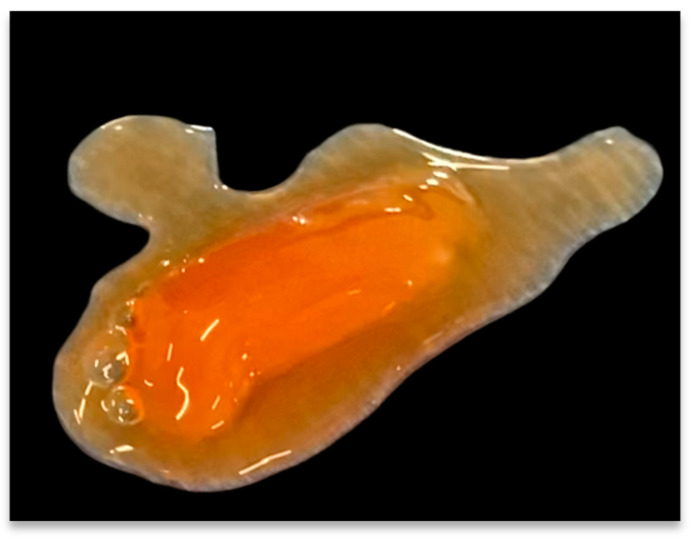Figure 1.
PRP-G clot. A liquid, 7 mL PRP concentrate specimen, was mixed with a combination of 0.30 mL of CaCl (10%) and 0.2 mL of thrombin (50 IU) to induce the polymerization of fibrinogen, which is present in the PRP plasma fraction, into fibrin. The result is a stable PRP-G scaffold that contains high concentrations of platelets and eventually leukocytic cells, when compared to PRF preparations [35].

